
Marching S.D.s exercises
.pdf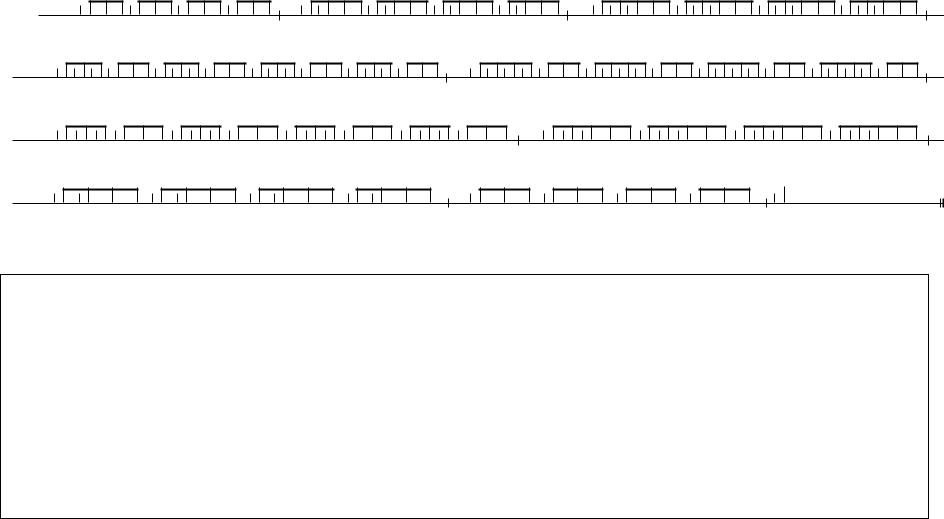
|
|
|
|
|
|
|
|
|
|
|
|
|
|
|
|
|
|
Add-a-Flam Drag |
|
|
|
|
|
|
|
|
|
|
|
|
|
|
|
snarescience.com - Universal |
|||||||||||||
|
|
|
|
|
|
|
|
|
|
|
|
|
|
|
|
|
|
|
|
|
|
|
|
|
|
|
|
|
|
|
|
|
|
|
|
|
|
|
|
|
|||||||
Snare |
|
|
|
|
|
|
|
|
|
|
|
|
|
|
|
|
|
|
|
|
|
|
|
|
|
|
|
|
|
|
|
|
|||||||||||||||
|
|
||||||||||||||||||||||||||||||||||||||||||||||
|
|
|
|
|
|
|
|
|
|
|
|
|
|
|
|
|
|
|
|
|
|
|
|
|
|
|
|
|
|
|
|
|
|
|
|
|
|
|
|
|
|
|
|
|
|
||
|
|
|
|
|
|
|
|
|
|
|
|
|
|
|
|
|
|
|
|
|
|
|
|
|
|
|
|
|
|
|
|
|
|
|
|
|
|
|
|
|
|
|
|
||||
|
|
R |
l |
r |
L |
r |
l... |
|
|
|
|
|
R |
R |
l r |
L |
L |
r |
l... |
|
|
|
|
|
|
|
|
R |
R |
R |
l |
r |
L |
L |
L |
r |
l... |
|
|
|
|
|
|
|
|
|
|
|
|
|
|
|
|
|
|
|
|
|
|
|
|
|
|
|
|
|
|
||||||||||||||||||||||||||||
|
|
|
|||||||||||||||||||||||||||||||||||||||||||||
|
|
|
|
|
|
|
|
|
|
|
|
|
|
|
|
|
|
|
|
|
|
|
|
|
|
|
|
|
|
|
|
|
|
|
|
|
|
|
|
|
|
|
|
|
|
|
|
|
|
|
|
|
|
|
|
|
|
|
|
|
|
|
|
|
|
|
|
|
|
|
|
|
|
|
|
|
|
|
|
|
|
|
|
|
|
|
|
|
|
|
|
|
|||
|
R |
R |
R |
R |
l r |
L |
L |
L |
L |
r |
l... |
|
|
|
|
|
|
|
|
|
R |
R |
R |
R |
R |
l r |
L |
L |
L |
|
L |
L |
r |
l... |
|
|
|
|
|
|
|
|
|
|
|
|
|
|
|
|
|
|
|
|
|
|
|
|
|
|
|
|
|
|
|
|
|
|
|
|
|
|
|||||||||||||||||||||||
|
|
|
|||||||||||||||||||||||||||||||||||||||||||||
|
|
|
|
|
|
|
|
|
|
|
|
|
|
|
|
|
|
|
|
|
|
|
|
|
|
|
|
|
|
|
|
|
|
|
|
|
|
|
|
|
|
|
|
|
|
|
|
|
|
|
|
|
|
|
|
|
|
|
|
|
|
|
|
|
|
|
|
|
|
|
|
|
|
|
|
|
|
|
|
|
|
|
|
|
|
|
|
|
|
|
|
|
|||
|
R |
R |
R |
R |
l |
r |
L |
L |
L |
L |
r |
l... |
|
|
|
|
|
|
|
|
|
|
|
|
R |
R |
R |
l |
r |
|
L |
L |
|
L |
r |
l... |
|
|
|
|
|
|
|
|
|
|
|
|
|
|
|
|
|
|
|
|
|
|
|
|
|
|
|
|
|
|
|
|
|
|
|
|
|
|
|
|
|
|
|
|
|
|
|
|
|
|
|
|
|
||||||
|
|
|
|
|
|
|
|
||||||||||||||||||||||||||||||||||||||||
|
|
|
|
|
|
|
|
|
|
|
|
|
|
|
|
|
|
|
|
|
|
|
|
|
|
|
|
|
|
|
|
|
|
|
|
|
|
|
|
|
|
|
|
|
|
|
|
|
|
|
|
|
|
|
|
|
|
|
|
|
|
|
|
|
|
|
|
|
|
|
|
|
|
|
|
|
|
|
|
|
|
|
|
|
|
|
|
|
|
|
|
|
|
||
|
R |
R |
|
l |
r |
L |
L |
|
r |
l... |
|
|
|
|
|
|
|
|
|
R |
|
l |
r |
L |
r |
|
l... |
|
|
|
|
|
|
|
|
|
|
R |
|
|
|
|
|
|
|
|
|
Purpose: The purpose of this exercise is to improve your grace note consistency on multiple same-hand flam drag rudiments.
Notes: This exercise should be played with 2 heights - and accent height (full vertical stroke at slow speeds, decreasing in height as the tempo increases) and a 3" tap height. When playing multiple flams in a row, try to play the main notes and grace notes as relaxed as possible. If you break each hand into its own components, you are just playing eight-on-a-hand strokes at different heights. Don't let the fact that you are playing flams change the basic mechanics of how you are producing the strokes.
A major, MAJOR tendency in this exercise will be to rush the diddle and the unaccented / unflammed notes, especially at the slower tempos. Be very conscious of placing these notes exactly on the eighth note pulse. Also, play the diddle with an accurate 16th note rhythm and don't drop it in early!
Pay attention to your grace note placement. Are you actually playing flams, or are you playing 'two-height double stops'? It is an easy mistake to shift the grace note directly on top of the main note.
Practice this with your metronome set to eighth notes, if it has that capability. This way you don't need to worry about the changing time signatures.
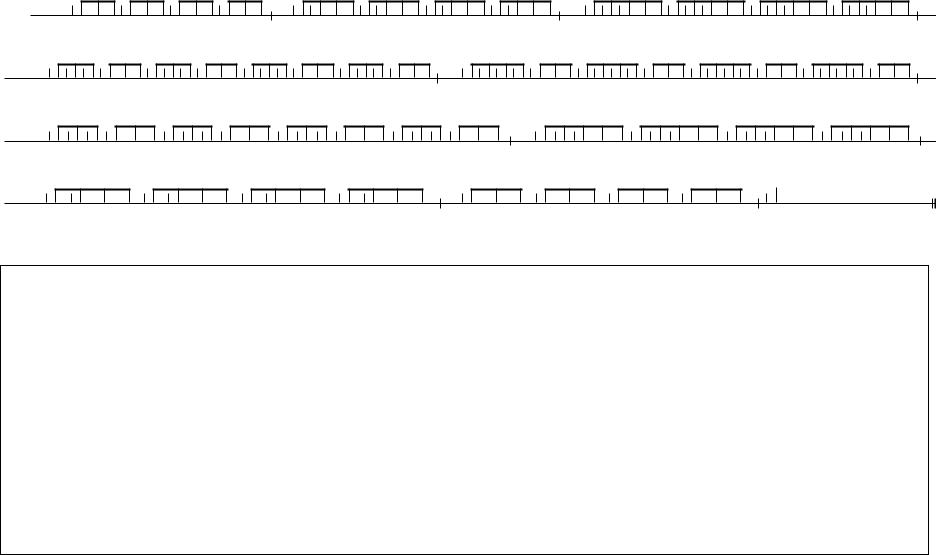
|
|
|
|
|
|
|
|
|
|
|
|
|
|
|
|
|
|
Add-a-Flam Five |
|
|
|
|
|
|
|
|
|
|
|
|
|
|
|
|
snarescience.com - Universal |
||||||||||||
|
|
|
|
|
|
|
|
|
|
|
|
|
|
|
|
|
|
|
|
|
|
|
|
|
|
|
|
|
|
|
|
|
|
|
|
|
|
|
|
|
|
||||||
Snare |
|
|
|
|
|
|
|
|
|
|
|
|
|
|
|
|
|
|
|
|
|
|
|
|
|
|
|
|
|
|
|||||||||||||||||
|
|
|
|||||||||||||||||||||||||||||||||||||||||||||
|
|
|
|
|
|
|
|
|
|
|
|
|
|
|
|
|
|
|
|
|
|
|
|
|
|
|
|
|
|
|
|
|
|
|
|
|
|||||||||||
|
|
|
|
|
|
|
|
|
|
|
|
|
|
|
|
|
|
|
|
|
|
|
|
|
|
|
|
|
|
|
|
|
|
|
|
|
|
|
|
|
|
|
|
||||
|
|
R |
l |
r |
L |
r |
l... |
|
|
|
|
|
R |
R |
l r |
L |
L |
r l... |
|
|
|
|
|
|
|
|
R |
R |
|
R l |
r |
L |
L |
L |
r |
l... |
|
|
|
|
|
|
|
|
|
||
|
|
|
|
|
|
|
|
|
|
|
|
|
|
|
|
|
|
|
|||||||||||||||||||||||||||||
|
|
|
|||||||||||||||||||||||||||||||||||||||||||||
|
|
|
|
|
|
|
|
|
|
|
|
|
|
|
|
|
|
|
|
|
|
|
|
|
|
|
|
|
|
|
|
|
|
|
|
|
|
|
|
|
|||||||
|
|
|
|
|
|
|
|
|
|
|
|
|
|
|
|
|
|
|
|
|
|
|
|
|
|
|
|
|
|
|
|
|
|
|
|
|
|
|
|
|
|
|
|
|
|
||
|
R |
R |
|
R |
R |
l r |
L |
L |
L |
L |
r |
l... |
|
|
|
|
|
|
|
|
|
R R |
R |
R |
R l |
r |
|
L |
L |
L |
L |
L |
r |
l... |
|
|
|
|
|
|
|
|
|
|
|
|
|
|
|
|
|
|
|
|
|
|
|
|
|
|
|
|
|
|
|
|
|
|
|
||||||||||||||||||||||||||
|
|
|
|||||||||||||||||||||||||||||||||||||||||||||
|
|
|
|
|
|
|
|
|
|
|
|
|
|
|
|
|
|
|
|
|
|
|
|
|
|
|
|
|
|
|
|
|
|
|
|
|
|
|
|
|
|
||||||
|
|
|
|
|
|
|
|
|
|
|
|
|
|
|
|
|
|
|
|
|
|
|
|
|
|
|
|
|
|
|
|
|
|
|
|
|
|
|
|
|
|
|
|
|
|||
|
R |
R |
R |
R |
l |
r |
L |
L |
L |
L r |
l... |
|
|
|
|
|
|
|
|
|
|
|
R |
R |
R |
l |
r |
L |
L |
|
L |
r |
l... |
|
|
|
|
|
|
|
|
|
|
||||
|
|
|
|
|
|
|
|
|
|
|
|
|
|
|
|
|
|
|
|
|
|
|
|
|
|
|
|
|
|
|
|
|
|
|
|
|
|||||||||||
|
|
|
|
|
|
|
|||||||||||||||||||||||||||||||||||||||||
|
|
|
|
|
|
|
|
|
|
|
|
|
|
|
|
|
|
|
|
|
|
|
|
|
|
|
|
|
|
|
|
|
|
|
|
|
|
||||||||||
|
|
|
|
|
|
|
|
|
|
|
|
|
|
|
|
|
|
|
|
|
|
|
|
|
|
|
|
|
|
|
|
|
|
|
|
|
|
|
|
|
|
|
|
|
|
|
|
|
R |
R |
l |
|
r |
L |
L |
r |
l... |
|
|
|
|
|
|
|
|
|
R |
l |
r |
L |
r |
|
l... |
|
|
|
|
|
|
|
|
|
|
R |
|
|
|
|
|
|
|||||
Purpose: The purpose of this exercise is to improve your grace note consistency on multiple same-hand flam five rudiments.
Notes: This exercise should be played with 2 heights - an accent height (full vertical stroke at slow speeds, decreasing in height as the tempo increases) and a 3" tap height. When playing multiple flams in a row, try to play the main notes and grace notes as relaxed as possible. If you break each hand into its own components, you are just playing eight-on-a-hand strokes at different heights. Don't let the fact that you are playing flams change the basic mechanics of how you are producing the strokes.
A major, MAJOR tendency in this exercise will be to rush the low diddle and the unaccented / unflammed note, especially at the slower tempos. Be very conscious of placing these notes exactly on the eighth note pulse.
It is easy to get 'poundy' on the accented diddle - make sure to keep this diddle nice and open, using the same consistency of sound that you use on the regular accented notes.
Pay attention to your grace note placement. Are you actually playing flams, or are you playing 'two-height double stops'? It is an easy mistake to shift the grace note directly on top of the main note.
Practice this with your metronome set to eighth notes, if it has that capability. This way you don't need to worry about the changing time signatures.

Book Report Thing #1
SnareScience.com - Troy Hommerding (?) 1998
Snare |
|
|
|
|
|
|
|
|
|
|
|
|
|
|
|
|
|
|
|
|
|
|
|
|
|
|
|
|
|
|
|
|
|||||||
|
|
|
|
|
|
|
|
|
|
|
|
|
|
|
|
|
|
|
|
|
|
|
|
|
|||||||||||||||
|
|
|
|
|
|
|
|
|
|
|
|
|
|
|
|
|
|
|
|
|
|
|
|
|
|
|
|
|
|
|
|
|
|
|
|
|
|
|
|
|
|
|
|
|
|
|
|
|
|
|
|
|
|
|
|
|
|
|
|
|
|
|
|
|
|
|
|
|
|
|
|
|
|
|
|
|
|
|
|
|
|
R |
|
l |
r |
|
r |
L |
r |
l |
l |
R |
|
l |
r |
L |
r |
l |
|
R |
|
l |
|
r |
r |
L |
r |
|
|
l |
l |
R |
l |
|
r |
L |
r |
l |
|
|
|
|
|
|
|
|
|
|
|
|
|
|
|
|
|
|
|
|
|
|
|
|
|
|
|
|
|
|
|
|
|
|
|
|
|
|
|
|
|
|
|
|
|
|
|
|
|
|
|
|
|
|
|
|
|
|
|
|
|||||||||||||||||||||
|
|
|
|
|
|
|
|
|
|
|
|
|
|||||||||||||||||||||||||||
|
|
|
|
|
|
|
|
|
|
|
|
|
|
|
|
|
|
|
|
|
|
|
|
|
|
|
|
|
|
|
|
|
|
|
|
||||
|
|
|
|
|
|
|
|
|
|
|
|
|
|
|
|
|
|
|
|
|
|
|
|
|
|
|
|
|
|
|
|
|
|
|
|
|
|
|
|
|
R l |
|
r |
L |
r l |
R |
l |
|
r r |
L |
r |
|
l |
l |
R l |
|
r |
L |
r l |
|
R |
l |
r |
r |
L |
r |
|
|
l |
l |
R |
|
|
|
|
|
|
||
Purpose: |
This exercise focuses on the book report hybrid rudiment and the gridded flam drag. |
|
1) |
Stick motion: |
There are many opportunities to make stick height errors in this exercise. Start slow and make sure that every tap height |
|
|
is exactly the same. |
2) |
Sound Quality: |
The diddles in this exercise can tend to be harsh sounding, especially the ones in the gridded flam drag since we are going |
|
|
from a low tap to a high accented diddle. Make sure to keep the hands relaxed so you don't pound the accented diddles. |
3) Rhythm and Timing: |
Again, there is a lot going on in this exercise. It will be difficult to play the underlying 16th notes with perfectly even |
|
|
|
rhythm. One easy way to check your rhythm is to play the whole exercise at the tap height. This requires a lot of control! |
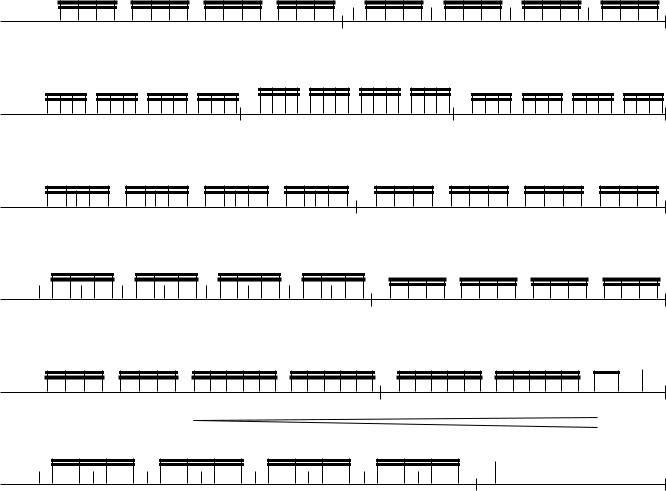
Snare Drum
Cha-fa-diddles
Jesse Burnett
|
|
|
|
|
|
|
|
|
|
|
|
|
|
|
|
|
|
|
|
|
|
|
|
||||||||
|
|
|
|||||||||||||
|
|
|
|
|
|
|
|
|
|
|
|
|
|
|
|
|
|
|
|
|
|
|
|
|
|
|
|
|
|
||
|
R l |
|
r r |
L r |
l |
l sim. |
|
|
|
|
|
|
|
|
|
3 |
|
|
|
|
|
|
|
|
|
|
|
|
|
|
|
|
|
|
|
|
|
|
|
||||||||
|
|||||||||||||||
6 |
|
|
|
|
|
|
|
|
|
|
|
|
|
|
|
|
|
|
|
|
|
|
|
|
|
||||||
|
|
||||||||||||||
|
|
|
|
|
|
|
|
|
|
|
|
|
|
||
8 |
|
|
|
|
|
|
|
|
|
|
|
|
|
|
|
|
|
|
|
|
|
|
|
|
|
|
|
|
|
|
|
|
|
|
|
|
|
|
|
|
|
|
|||||
|
|
|
|
|
|
||||||||||
|
|
|
|
|
|
|
|
|
|
R |
l r |
r L r |
l l r |
L r r |
l R l l |
|
|
|
|
|
|
|
|
|
6 |
|
|
6 |
|
6 |
rim shot |
10 |
|
|
|
6 |
|
|
stick press |
||||||||
R l r r L r l l R l r r l l R l r r l l |
R l r r l l R l r r l l R l R |
p |
ff |
12 |
|
|
|
|
|
|
|
|
|
|
|
|
|
|
|||||
|
|
|
|
|
|
|
|
|
|
|
|
|
|
|
|
|
|
|
|
|
|
|
|
|
|
|
|
|
|
|
|
|
|||||||
|
|
|
|
|
|
|
|
||||||||||||
|
|
|
|
|
|
|
|
|
|
|
|
|
|
||||||
|
|
R |
l |
r r |
L r |
|
l |
l |
R l |
|
L r |
R l |
|
r r |
|||||
Sib

|
|
|
|
|
|
|
|
|
|
|
|
|
|
|
|
|
|
Cheese Accent Break Down |
|
|
|
|
|
|
|
|
|
|
snarescience.com - Universal |
||||||||||||||
|
|
|
|
|
|
|
|
|
|
|
|
|
|
|
|
|
|
|
|
|
|
|
|
|
|
|
|
|
|
|
|
|
|
|
|
|
|||||||
Snare |
|
|
|
|
|
|
|
|
|
|
|
|
|
|
|
|
|
|
|
|
|
|
|
|
|
|
|
|
|
|
|
|
|
||||||||||
|
|
|
|
|
|
|
|
|
|
|
|
|
|
|
|
|
|
|
|
|
|
||||||||||||||||||||||
|
|
|
R |
|
r |
r r |
etc... |
|
|
|
|
|
|
|
|
|
|
|
|
|
|
|
|
|
|
|
|
|
|
R |
r |
L r |
etc... |
|
|
|
|
|
|
|
|
|
|
|
|
|
|
|
|
|
|
|
|
|
|
|
|
|
|
|
|
|
|
|
|
|
|
|
|
|
|
|
|
|
|
|
|
|
|
|
|
|
|
|
|||
|
|
|
|
|
|
|
|
|
|
|
|
|
|
|
|
|
|
|
|
|
|
|
|
|
|
|
|
|
|
|
|
|
|
|
|
||||||||
|
|
|
|
|
|
|
|
|
|
|
|
||||||||||||||||||||||||||||||||
|
|
|
|
|
|
|
|
|
|
|
|
|
|
|
|
|
|
|
|
|
|
|
|
|
|
|
|
|
|
|
|
|
|
|
|
|
|
|
|
|
|
|
|
|
R |
l r |
L |
r |
l |
etc... |
|
|
|
|
|
|
|
|
|
|
|
|
|
|
R l L |
|
l |
l l L |
|
l etc... |
|
|
|
|
|
|
|
|
|
|
|
|
|
|
|
|
|
|
|
|
|
|
|
|
|
|
|
|
|
|
|
|
|
|
|
|
|
|
|
|
|
|
|
|
|
|
|
|
|
|
|
|
|
|
|
|
|
||||
|
|
|
|
|
|
|
|
|
|
|
|
|
|
|
|
|
|
|
|
|
|
|
|
|
|
|
|
|
|
|
|
|
|
|
|
|
|
|
|
|
|||
|
|
|
|
|
|
|
|
|
|
|
|
|
|
|
|
|
|
|
|
||||||||||||||||||||||||
|
|
|
|
|
|
|
|
|
|
|
|
|
|
|
|
|
|
|
|
|
|
|
|
|
|
|
|
|
|
|
|
|
|
|
|
|
|
|
|
|
|
|
|
|
R |
l |
L |
|
l |
etc... |
|
|
|
|
|
|
|
|
|
|
|
|
|
|
R l |
r |
L |
r l etc... |
|
|
|
|
|
|
|
|
|
|
|
|
|
|
|
|
|
||
Purpose: |
This exercise breaks down the left and right hands of the cheese accent rudiment. This is an excellent exercise for developing cheese accent quality |
|
and consistency. |
Notes: |
This exercise should be very legato. Make sure that you use three distinct heights - one height for accents, one for eighth note flam |
|
grace notes, and a tap height for all other notes. The grace notes for the eighth note flams can be played at a true grace note height (1"). |
|
16th note flams should be played with 3" grace notes. |
Sound Quality: The main areas where mistakes are made is in accented diddle and the three taps following the accent. A common tendency is to play
the accented diddle with a harsh sound quality. Make sure you are playing the diddle with the same quality that you would use for a double stroke in Sanford double beat. The taps are basically a tap-height triple stroke. Make sure that the sound quality on all the taps is consistent.
This is the job of the fingers on the right hand and the thumb and index finger of the left hand.
Rhythm and Timing:
The main issue here is going to be flam consistency. Placing a very consistent space between the grace note and the main note of a flam is one of the greatest challenges in snare drumming. So, when you play this exercise, really tune your ear in to the quality of your
flams. It helps to play this exercise on a the hard side of a practice pad. The short duration of the sound will allow you to hear and identify any variation in your flam quality.

Colt Forty Five
snarescience.com - Universal
|
|
|
5 |
5 |
|
5 |
5 |
|
5 |
5 |
5 |
|
5 |
|
|
|
|
|
|
|
|||||||||
Snare |
|
|
||||||||||||
|
|
|
|
|
|
|
|
|
|
|
|
|||
|
|
|
R L R L etc... |
|
|
|
|
|
|
|
|
|
|
|
|
|
|
5 |
5 |
5 |
5 |
|
5 |
5 |
5 |
5 |
|
|
|
|
|
|
||||||||||||
|
||||||||||||||
|
|
|
|
|
|
|
|
|
|
|
|
|
||
Purpose: The purpose of this exercise is to improve your quintuplet (or "fivelet") rhythmic interpretation.
Notes: This exercise should be relaxed with very legato stick motions. In general, this exercise is played with full legato strokes, but it can be played at lower heights if you wish.
Because quintuplets are an odd meter and this exercise is completely monotone, it can be helpful to think of the first and third notes of each grouping of five. In this way, you can more easily keep track of where the beat is in relation to the fivelets. THINK accents in your head as follows, but PLAY the fivelets unaccented: (R l R l r L r L r l)
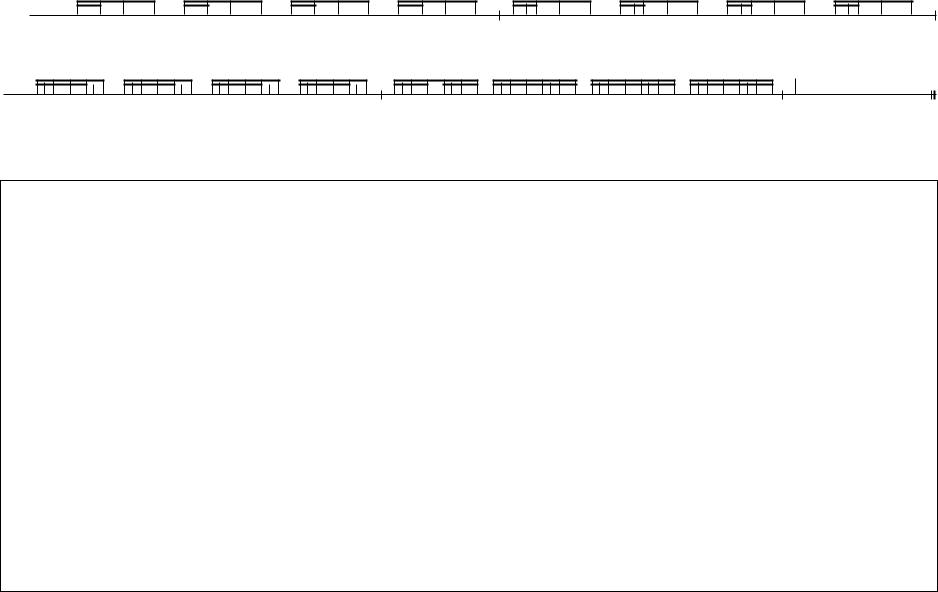
Dachuda Breakdown
snarescience.com - Universal
|
|
|
|
|
|
|
|
|
|
|
|
|
|
|
|
|
|
|
|
|
|
|
|
|
|
|
|
|
|
|
|
|
|
|
|
|
|
|
|
|
|
|
|
|
|
|
|
|
|
|
|
|
|
|
|
|
|
|
|
|
|
|
|
|
|
|
|
|
|
|
|
|
|
|
|
|
|
||
Snare |
|
|
|
|
|
|
|
|
|
||||||||||||||||||||||||||||||
|
|
|
|
|
|
|
|
|
|
|
|
|
|
|
|
|
|
|
|
|
|
|
|
|
|
|
|
|
|
|
|
|
|
|
|
|
|
||
|
|
|
R |
|
r |
r |
r... |
|
|
|
|
|
|
|
|
|
|
|
|
|
|
R |
|
l |
r |
r... |
|
|
|
|
|
|
|
|
|
|
|
|
|
|
|
|
L |
|
l |
l |
l... |
|
|
|
|
|
|
|
|
|
|
|
|
|
|
L |
|
r |
l |
l... |
|
|
|
|
|
|
|
|
|
|
|
|
|
|
|
|
|
|
|
|
|
|
|
|
|
|
|
|
|
|
|
|
|
|
|
|
|
|
|
|
|
|
|
|
|
|
|
|
|
|
|
|
|
|
|
|
|
|
|||||||||||||||||||||||||||||||||||
|
|
|
|
|
|
|
|
|
|
|
|
|
|
|
|
|
|
|
|
|
|
|
|
|
|
|
|
|
|
|
|
|
|
|
|
|
|
|
|
|
|
|
|
|
|
|
|
|
|
|
|
|
|
|
|
|
|
|
|
|
|
|
|
|
|
|
|
|
|
|
|
|
|
|
|
|
|
|
|
|
R |
l |
r |
L |
r... |
|
|
|
|
|
|
|
|
|
|
R |
l |
r |
L |
r |
l... |
|
|
|
|
|
|
|
|
|
|
|
|
R |
|
|
|
|
|
|
L |
r |
l |
R |
l... |
|
|
|
|
|
|
|
|
|
|
L |
r |
l |
R |
l |
r... |
|
|
|
|
|
|
|
|
|
|
|
|
L |
|
|
|
|
|
Purpose: The purpose of this exercise is to improve your accuracy and consistency on the Dachuda / Tajada / Dachutta (or whatever you want to call it) rudiment. The dachuda is basically a flam accent with the accent shifted onto the 3rd partial of the rudiment. This is a tricky rudiment that requires a lot of control on the stick heights and the placement of the grace notes.
Notes: This exercise should be played with 3 heights. Let's break down the first 4 notes (the basic unit of a dachuda)
i)The accent height should be a full (vertical) stroke at slow tempos, and gradually decrease as the tempo gets faster.
ii)The 2nd two notes of the triple stroke should be at 3" - this is where the stick height control comes into play. For the right hand, use the back fingers
to control the rebound so that the stick only comes up to 3" after the initial accented stroke. On the left hand, use the thumb and index finger to control the rebound in a similar fashion. For both hands, make sure that by controlling the rebound you are NOT POUNDING the accented note. The accent should have the same sound quality as a regular eight-on-a-hand stroke.
iii) The last eighth note in each grouping should be played at 4-5". This gives the flam a distinguished difference in heights between the grace note and the main note. In the above music, the 4-5" notes are notated by placing a small circle above the note.
Recommendations: Achieving consistent heights on this rudiment will require pounding it into your muscle memory. I would recommend playing the first measure alone as double stops (both hands together in unison) to make sure that you are controlling the rebound the same in each hand. If you watch the beads of your sticks, your right and left should look like mirror images of each other. Once you have this step down, proceed with the exercise.
In the second measure of the exercise, be careful to place your grace notes consistently in front of the main note. Also, check that you are playing the main note of the flam at the same 4-5" height that you used in the first measure.
Play the exercise starting either the right hand or the left hand, as noted in the sticking.
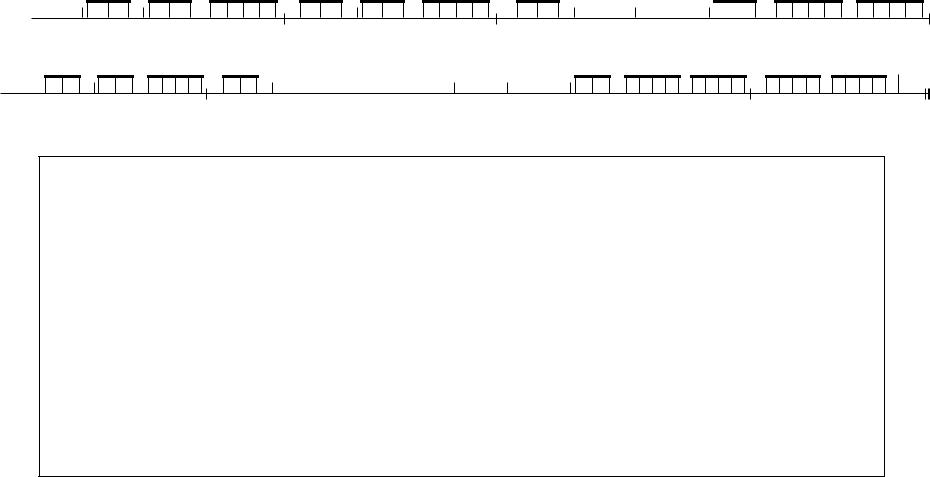
|
|
5:3 |
|
Snare |
|
|
|
|
|
|
|
|
|
|
|
||||||
|
|
|
|
|
|
|
|
|
|
|
|
|
|
|
|
|
|
|
|
R |
l |
r |
L |
r |
l |
R R R l |
|
|
|
|
|
|
5:3 |
|
|
|
|
|
|
|
||||
|
|
|
|
|
|
|
|
|
|
|
|||||||
|
|
|
|
|
|
|
|
|
|
sim |
|
|
|
|
|
|
|
Egg Beater Mission
|
|
5:3 |
|
l |
R l r L r l r r L L L |
|
R l r |
||||||||||||||||||||||||||||||||||||||
|
5:3 |
|
|
|
|
|
|
|
|
|
|
|
|
|
|||||||||||||||||||||||||||
|
|
|
|
|
|
|
|
||||||||||||||||||||||||||||||||||
|
|
|
|
|
|
|
|
|
|
|
|
|
|
|
|
|
|
|
|
|
|
|
|
|
|
|
|
|
|
|
|
|
|
|
|
|
|
|
|
||
|
|
|
|
|
|
|
|
|
|
|
|
|
|
|
|
|
|
|
|
|
|
|
|
|
|
|
|
|
|
|
|
|
|
|
|
|
|
|
|||
|
|
||||||||||||||||||||||||||||||||||||||||
|
|
|
|
|
|
|
|
|
|
|
|
|
|
|
|
|
|
|
|
||||||||||||||||||||||
|
|
|
|
|
|
|
|||||||||||||||
|
|
|
|
|
|
|
|
|
|
|
|
|
|
|
|
|
|
|
|
|
|
|
|
|
|
|
|
|
|
|
|
|
|
|
|
|
|
|
|
|
|||
|
|||||||||||||||||||||
|
|
|
|
|
|
|
|
|
|||||||||||||
L r |
|
l sim |
|
|
|
|
|
|
|
||||||||||||
|
5:3 |
|
|
|
|
5:3 |
|
|
|||||||||||||
|
|
|
|
|
|||||||||||||||||
R R R l l r r L L L
SnareScience.com
5:3 |
5:3 |
|
|
R R R l |
l r r L |
L L |
5:3 |
5:3 |
|
|
|
R R R l l r r L L L R
Purpose: |
This exercise is in the standard 'mission' form. The rudiment being played is a regular egg beater, followed by an inverted |
|
egg beater. The goal of the exercise is to smooth out the egg beater rhythm and give a nice, roll-like quality of sound. |
1) Stick motion: |
I like to play this exercise with the following heights: Check pattern is full to 3". Egg beaters are full / 15" to 9", i.e. play the |
|
triple stroke at full or 15" and the double stroke at 9". This is similar to the sevenlet heights played in the BD 1995 snare break |
|
(RRR ll rr LLL rr ll) |
2) Sound Quality: |
Shoot for the same sound quality in the egg beaters as you get for the double and triple strokes in Sanford. Mechanically, there |
|
is no difference so don't let the strange 5:3 meter affect the sound quality. As always, make sure your flam accents are nice and |
|
tight with no pounding on the accents. |
3) Rhythm and Timing: |
The rhythmic accuracy in the egg beaters is the main challenge in this exercise. Many people tend to crush |
|
down the double strokes in the egg beaters. Try to keep these very open so that you can hear the exact same space between |
|
every note in the egg beater. |
4)Variations to this exercise:
a)Play off the left
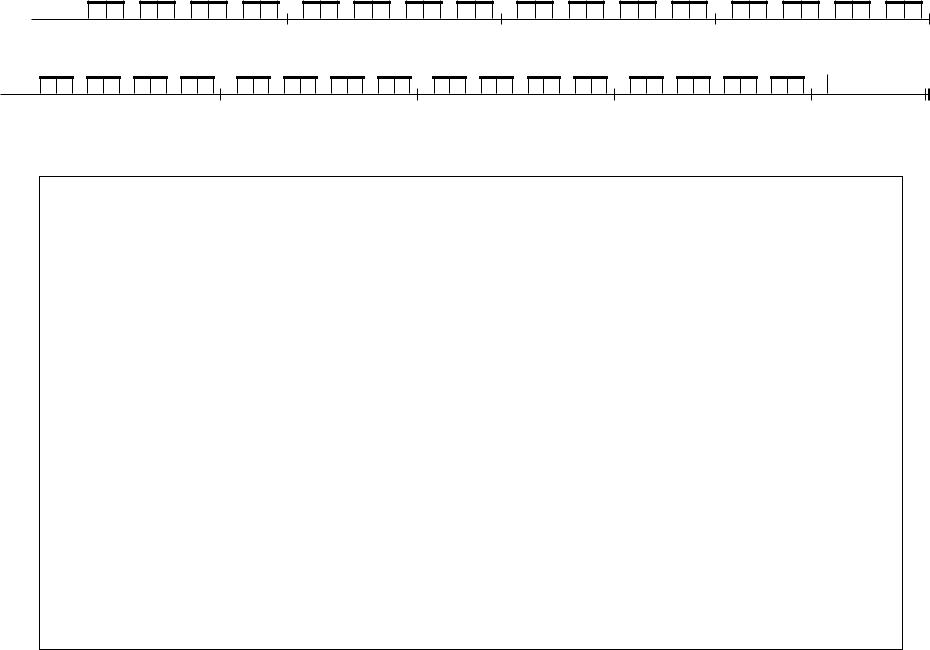
|
|
|
|
|
|
|
|
|
|
|
8 and 4 |
|
SnareScience.com - Universal |
|
|
|
|
|
|
|
|
|
|
|
|
|
|
|
|
|
|
|
|
|
|
|
|
|
|
|
|
|
|
|
|
|
|
||||||||
Snare |
|
|
|||||||||||
|
|
|
|
|
|
|
|
|
|
|
|
||
|
|
|
R... |
|
|
|
|
|
|
|
|
|
|
|
|
|
|
|
|
|
|
|
|
|
|
||
|
|
||||||||||||
|
|
|
|
|
|
|
|
|
|
|
|
|
|
|
L... |
|
|
|
|
|
|
|
|
|
|
|
R |
Purpose: |
This exercise focuses on the basic two height stroke. The exercise seems simple, but there are many things to think about. |
1) Stick motion: There are three different stick motions in this exercise: high-to-low, low-to-low, and low-to-high. Make sure that every motion
is self consistent. Every accent height should be exactly the same and every tap height should be exactly the same. At high tempos, a slight moeller motion should be used to allow for fast, relaxed low-to-high strokes.
2) Sound Quality: Does every tap stroke sound the same? How about every accent? How about from your right hand to your left? Some common mistakes:
a)Playing your taps too high in general, though some people have the opposite problem. Shoot for exactly 3" for all of your taps.
b)At higher tempos, playing the first accent of each measure higher than the rest of the accents - Control that first accent height.
c)Pounding the very last note of the exercise.
d)Playing the right hand accents higher than the left... don't be the guy with the weak left!
3)Rhythm and Timing: How perfect is your eighth note rhythm? Some common areas where mistakes occur:
a)First two notes of the exercise: The first note defines the exercise starting point and the second note defines the tempo. You must internalize the tempo before you start so that these two notes are 'perfect'.
b)Hand-to-hand transfers: It is very common for people to warp the rhythm when switching hands. The key here is to think
of the exercise as a steady stream of eighth notes while ignoring the fact that you are switching hands. The tendency will almost always be to rush the last one or two eighth notes before the hand transfer.
4)Variations to this exercise:
a)Play entire exercise on one hand - chop building!
b)Play exercise at with different accent and tap heights - 6" to 3", 15" to 3", 9" to 6", etc.
c)Play exercise as all double stops, checking that the stick motion from left to right is the same - DO THIS! This is a great way to improve your accent-to-tap stroke on the left hand - have your right hand 'teach' your left!
d)Play on low-rebound surface to improve muscle strength and endurance.
e)Invert the accents and the taps, i.e. play all of the taps as accents and all of the accents as taps.
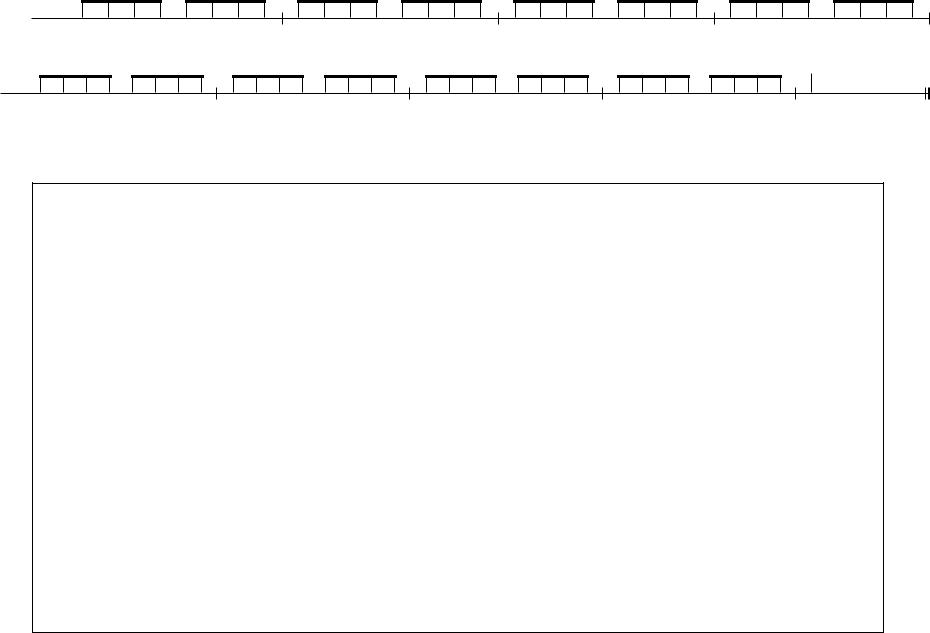
Eight on a Hand
SnareScience.com - Universal
|
|
|
|
|
|
|
|
|
Snare |
|
|
||||||
|
|
|
|
|
|
|
||
|
|
|
R R R R R R R R |
L L L L L L L L |
R R R R R R R R |
L L L L L L L L |
||
|
|
|
|
|||||
|
||||||||
|
|
|
|
|
|
|
|
|
R R R R R R R R L L L L L L L L R R R R R R R R L L L L L L L L R
Purpose: |
This exercise focuses on the basic velocity stroke. The exercise seems simple, but there are many things to think about. |
1)Stick motion: Do your sticks move exactly the same way for every stroke?
2)Sound Quality: Does every stroke sound the same? How about from left to right hand? Make sure you play every note with the same
exact volume. Some common mistakes:
a)Pounding the last note of each hand when stopping the stick from rebounding.
b)At higher tempos, playing the first note higher than the rest of the notes... just because it is easier to play the first note higher doesn't mean you should.
c)Pounding the very last note of the exercise.
d)Playing the right hand louder than the left... don't be the guy with the weak left!
3)Rhythm and Timing: How perfect is your eighth note rhythm? Some common areas where mistakes occur:
a)First two notes of the exercise: The first note defines the exercise starting point and the second note defines the tempo. You must internalize the tempo before you start so that these two notes are 'perfect'.
b)Hand-to-hand transfers: It is very common for people to warp the rhythm when switching hands. The key here is to think of the exercise as a steady stream of eighth notes while ignoring the fact that you are switching hands.
4)Variations to this exercise:
a)Play 16, 32, or 64 on a hand.
b)Play exercise at different heights; 1", 3", 6", 9", 12", 15", Full.
c)Play exercise as all double stops, checking that the stick motion from left to right is the same.
d)Play on low-rebound surface to improve muscle strength and endurance
e)Play exercise with each individual finger on right hand and the thumb on the left hand to improve hand / finger strength
